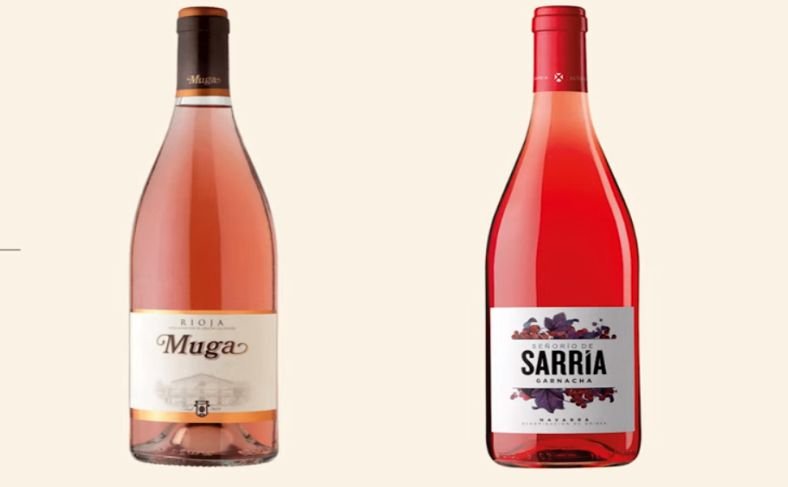Last updated on October 26th, 2025 at 06:54 pm
Experience the girlie pinky and fruit-forward rosé wine and its characteristic flavors, rich history, and perfect pairings in this comprehensive guide.
Rosé, with its girlie pink hue and fruity taste, has a way of winning loyalists over to its side.
Made from selected grapes, this likable wine range can be sweet or dry, giving the blend of fruits that massage the palates mildly.
Now seasonless, rose can be for any occasion and pairs well with different cuisines for casual and official gatherings.
What is Rosé Wine? The Fruit-forward Wine

Rosé wine is a fruit-forward wine made from red grape varieties with a soft pink color, produced by allowing limited contact between the grape skins and the juice after crushing.
Its production is straightforward with the skin contact method so could be the oldest kind of wine.
The color of the Rose wine can range from orange to purple, bright pink, and onionskin hues owing to the grape’s varieties and how much contact with the red skins.
Rose, which is named in its native France, is called same in English-speaking countries and Portuguese but Rosado in Spain and Rosato in Italy.
Why is Rosé Wine so Popular?
The reason for rosé’s famousness comes from its universality and approachability.
It presents a refreshing substitute to both reds and whites, making it perfect for many occasions and palates.
Its girlie pink shades are fruity and visually appealing, while its flavors and blends of crispy acidity, take care of diverse tastes.
Rosé’s ability to interact well with many foods makes it more appealing. Also, its association with outdoor occasions and summer identity makes it a social drink for everyone.
What Does Rosé Wine Taste Like?
Rosé typically tastes light, refreshing, and fruity, with flavors that can range from soft strawberries and raspberries to citrusy notes like grapefruit or orange peel.
Depending on the grape variety and winemaking techniques, it may present floral hints.
The acidity in rosé is often crisp, balancing the fruitiness and providing a clean finish.
Rosés can vary in sweetness levels, from bone-dry to slightly sweet, influencing their overall flavor profile.
Related Posts
Wine Appreciation for Gentlemen
White Wines: Types and Characteristics
What is the Difference between Sparkling Red Wine and Lambrusco?
Types of Rosé Wines
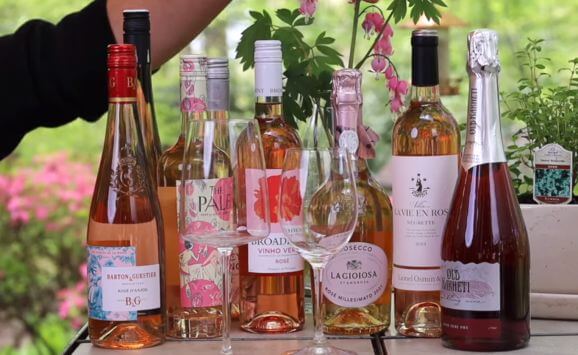
There are many types of rosés depending on the criteria for classification.
1. Blush Rosé
Blush rosé is one of the foremost rosé wines and identified by their pale pink color, as a result of limited skin contact during the winemaking process.
Blush roses are shy wines that show soft, delicate flavors with hints of strawberries, raspberries, and citrus.
Blush rosés are perfect for casual settings and interact well with salads, seafood, and light appetizers.
2. Provence Rosé
The name “Provence” has given it away already. Another type of rosé crafted in the Provence region in southeastern France.
Provence rosé are celebrated for their pale color and robust, dry profiles with crispy acidity, and light fruitiness with floral aromas.
Provence rosés are nice in warm weather and interact well with Mediterranean cuisine and grilled seafood.
3. Sparkling Rosé
Sparkling rosé is a unique kind of rosé that parades a touch of effervescence to the unmistakable rosé profile.
Crafted under the traditional hands of sparkling wine methods like Méthode Champenoise or Charmat, the sparkling rose range can be sweet or dry to sweet and shows the characteristic flavors of red berries, apples, and toast.
Sparkling rosés are good for celebrations and interact perfectly with appetizers and desserts.
4. White Zinfandel
The white Zinfandel is a kind of rosé native to California. It is popular for its blush pink color and sweet taste.
It has flavors reminiscent of strawberries, and melons, and is tropically fruity.
White Zinfandel is friendly and conjures well with spicy dishes and barbecue.
5. Tavel Rosé
Named after its region in the Rhône Valley of France, Tavel rosé is robust and full-bodied with deep color and flavors of red fruits and spices compared to others.
Tavel rosés interact well with Mediterranean cuisine and the grilled department.
6. Rosé of Pinot Noir
Rosé of Pinot Noir wines are crafted from the Pinot Noir grape variety, known for its soft flavors. These rosés can vary in color from pale pink to light ruby and show characteristic flavors of strawberries, cherries, and floral notes.
They go well with roasted poultry, seafood, and charcuterie.
Related: Red Wines
Characteristics of Rosé Wine

The rosé wine has striking appearances, aroma, flavor profile, and production methods that stand it out.
1. Appearance of Rose
One important characteristic of rosé is its color.
It has a feminine pink hue which can range along the pink-orange-red spectrum which is a result of the time the red grape skin is allowed to sit with the juice during production.
The longer the contact, the darker the color. Also, you can know about the flavor of the Rose through the color hue.
Light colors indicate softer tastes while darker colors are richer in flavor.
2. Aroma of Rose
Rosé wines’ aroma is inviting with fruity notes, in the neighborhood of fresh strawberries, ripe watermelon, juicy cherries, or tart cranberries. It also can feature floral scents like rose petals, lavender and orange blossoms.
Generally, its aroma is soft and light, hinting at its simple production and not-too-harsh acidity.
3. Flavor Profile of Rose
Rosé has a wide spectrum flavor just like its color. Rose wines boast light-medium-bodied wines with crispy tastes which may include raspberries, watermelon, and citrus.
There are also herb and spice flavors that add balance and fruitiness.
Related: Understanding the Sparkling, Fizzy Wines
Four Methods of Rosé Production
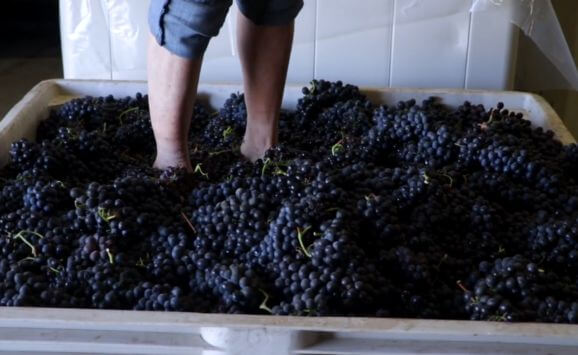
As hinted at the beginning of this article, there are four methods for producing rosé, each contributing to its unique characteristics:
1. Direct Pressing
Grapes are pressed gently to extract just enough color from the skins, resulting in a pale rosé with soft flavors.
2. Maceration
Grape skins are left in contact with the juice for a short period, typically a few hours to a few days, to achieve the desired color and flavor intensity.
3. Saignée
During the production of red wine, some of the juice is “bled off” early in the fermentation process to create a rosé with a deeper color and more robust flavor.
4. Blending
A small amount of red wine is mixed with white wine to produce rosé, although this method is less common and often not permitted in traditional winemaking regions.
How Rosé Wine is Produced

Produced from red grapes, the production process of rosé differs from that of red or white wines, resulting in its unique characteristics.
The production of rose wine begins with the selection of red grapes that are specifically chosen for their ability to produce the desired pink color and flavor profile.
Harvesting
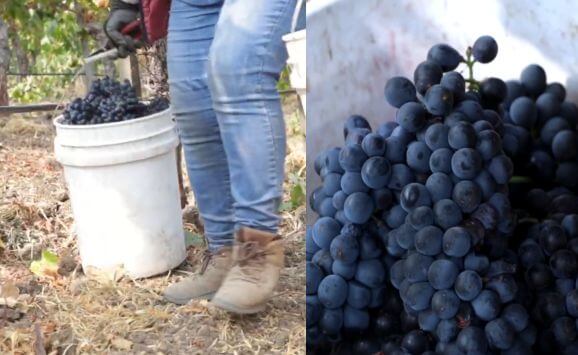
The first step of the production of wine is by picking of harvesting the grapes either by hand or by machines. Care is taken to remove rotten grapes which might affect the flavor of the wine.
Crushing
After harvesting, the grapes are crushed to release the juices from the cells and this is where everything gets interesting.
The crushing of the grapes sets off the breakdown of the contents which includes water, sugar, acids, tannins, phenolic compounds, and aroma and flavor.
How the crushed grapes are handled after crushing determines how the wine comes out. Also, it is after crushing that the type of production process described above is initiated.
Fermentation
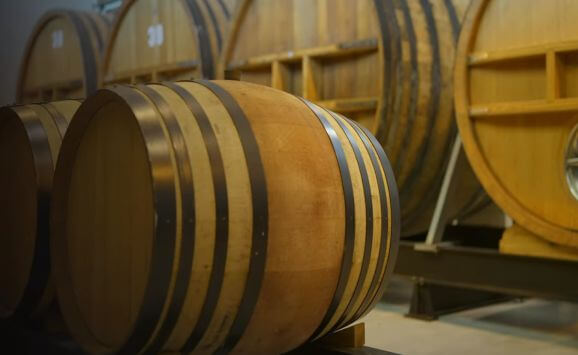
After crushing, the juice is taken to a fermentation tank for the fermentation process, sometimes with the addition of yeast to enhance the process.
Fermenting wine juices can stretch several days or weeks depending on the desired outcome of the wine.
At this stage of Rose winemaking, the temperature, acidity, sugar levels and other parameters are monitored to align with the flavor profile the winemaker wants to achieve.
Aging
Once fermentation is complete, the wine is transferred to another tank for aging.
Aging in winemaking is the process during which wine is stored for some time to develop its flavors, aromas, and textures.
Rose wines are aged differently than red wines. Rose wines are aged in stainless steel tanks to retain their soft and delicate flavors.
The aging process and duration take as long as a year or a few months depending on the parameters the winemaker desires to achieve.
Filtration and Bottling
As soon as the aging is completed, the next step is filtration and bottling.
However, depending on expertise and tricks, the wine can go through additional processes like fining and stabilization to filter any remaining particles after which the bottles are corked, labeled, and distributed.
Rosé Wines and Food Pairings
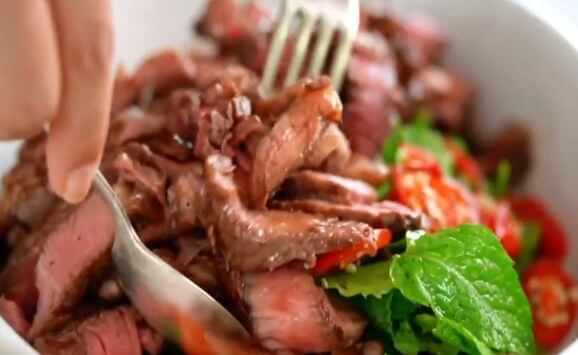
Food and wine pairings depend on the flavor of both considering health benefits and the feelings they conjure in the palates.
The rose wine’s softness and appearance make it agreeable to several dishes.
Most rose wines are fruity, and depending on the acidity too, they go with salads and seafood better. Also, cuisines of spicy grilled meats do well with it.
Here are some notable food pairings with the rose wine:
1. Rosé with Salads and Light Appetizers
Rosé interacts perfectly with salads and light appetizers due to its crisp acidity and refreshing fruitiness.
The wine’s vibrant flavors complement fresh greens, tangy dressings, and delicate ingredients like seafood and goat cheese.
2. Rosé and Seafoods
Rosé interacts well with seafood dishes like shrimp, salmon, and sushi, striking a balance with flavors from both sides.
The wine’s crispness promotes the briny notes of seafood dishes complementing both grilled and raw preparations.
3. Rose and Grilled Meats
Rosé pairs well with grilled meats, especially lighter proteins like pork and chicken.
Its acidity and fruity flavors go well with the savory, charred notes of grilled meats.
Bolder rosés made from grapes like Grenache, Syrah, and Mourvedre work best, as their structure can stand up to the robust flavors of grilled dishes. Rosé’s balance makes it a great choice for barbecues and summer cookouts featuring grilled pork chops, chicken, or even lamb.
4. Rosé and Spicy Cuisine
Rosé pairs well with spicy cuisines as its balanced fruitiness helps to douse the heat of spicy dishes. The refreshing nature of rosé makes it a great choice for spicy grilled meats, curries, and stir-fries.
Rosé Wine Regions and Styles

Rosé wines are produced in almost all the wine regions around the world with each region representing their unique expressions of the style.
Let’s take a look:
Provence, France
Provence, in southern France, is at the forefront of the production of high-quality rosé wines.
The region’s befitting climate, terroirs, and specialized winemaking styles produce pale, dry, and aromatic rosés.
Rosé’s crafter in Provence is usually from red grapes like Grenache, Cinsault, and Mourvèdre, using limited periods to extract minimal color and tannins which gives refreshing, soft, fruity wines
Tavel, France
Tavel, France, has established itself in the production of rosé wines, with some of the world’s most strong and full-bodied rosés coming from there.
Sitting in the Rhône Valley, Tavel’s unique terroir and strict winemaking standards craft rosés with exotic flavors of red berries, spices, and a wild flavor.
Navarra, Spain
Navarra, Spain, is celebrated for its rosé wines made from Garnacha (Grenache) and Tempranillo grapes.
Sitting near Rioja, it is blessed with favorable climates and soils, that give its rosés deeper color and richer flavors with bright acidity of red berries and citrus.
Navarra infuses traditional and modern winemakers’ techniques, creating rosé wines that go toe-to-toe with those from France.
California, USA
While France and Spain brag about the best rose regions, California, USA, produces exceptional rosé wines that are crispy, light, and fruity in many different ways because of its sunny climate.
Innovative winemaking techniques and a focus on quality have placed California on the frontline of leading producers of rosé wines.
Californian rosés present a different range of styles, from the pale, dry, and mineral-based wines of the Central Coast to the richer, more fruity indulgence of Napa and Sonoma.
Long Island, New York
Long Island, New York, is rising as a strong region for crafting high-quality rosé wines. With its maritime climate and grainy soils, Long Island presents rosés wines of bright acidity, soft flavors, and fruity flavors.
The winemakers infuse traditional, native French grape varieties with local craft, creating different and refreshing rosé wines.
Interpreting Rosé Descriptions
Interpreting rosé descriptions can be challenging for some rosé loyalists. Inscriptions like “notes of tar and rose petal” or “mineral-driven” may confuse some.
However, these descriptions are insightful in giving valuable information on the wine’s character and age.
They can help consumers find styles they’ll enjoy including structured rosés with complex flavors or crisp, refreshing wines with mineral notes.
Interpreting these terms requires experience helps to make smarter buying choices and enhances appreciation of rosé wines.
Notable Rosé Producers
As the popularity of rosé has grown, so too has the number of exceptional producers around the world. Some standout examples include:
Domaine Tempier, Provence, France
Considered one of the benchmark producers of Provençal rosé, Domaine Tempier crafts elegant, age-worthy wines that showcase the region’s terroir.
Château d’Esclans, Provence, France
The Château d’Esclans estate, home to the renowned “Whispering Angel” rosé, has played a significant role in elevating the perception and quality of Provençal rosés.
Tavel, Rhône Valley, France
The Tavel appellation in the Rhône Valley is known for its robust, full-bodied rosés, with producers like Domaine de la Mordorée and Château de Trinquevedel leading the charge.
Navarro Correas, Mendoza, Argentina
In Argentina, Navarro Correas has emerged as a standout producer of vibrant, fruit-forward rosés made from Malbec and Cabernet Franc grapes.
Wölffer Estate, Long Island, New York
On the East Coast of the United States, Wölffer Estate has become synonymous with high-quality, Provençal-style rosés from Long Island.
These are just a few examples of the many exceptional rosé producers around the world, each offering unique interpretations of this versatile and captivating wine style.
Frequently Asked Questions
What are the characteristics of rosé wine?
Rosé is known for its pink color, ranging from pale blush to deep salmon, with flavors of red fruits and a refreshing acidity.
Which process is used in the production of rosé wine?
Rosé is typically produced by limiting the contact between grape skins and juice during fermentation, allowing for a shorter maceration period.
What is rosé wine made of?
Rosé wine is made primarily from red grape varieties. It includes grape juice, skins (for color), and sometimes specific yeast strains for fermentation.
What is rosé wine?
It is a type of wine that has a pink color, derived from red grape skins being in contact with grape juice during fermentation.
Final Word from Gentsways
The Rosé wine is a delight to many loyalists for any occasion, presenting a characteristic range of flavors, aromas, and friendly pairings.
Its production methods and characteristics, from appearance to soft flavor profiles, make it an appealing choice for wine lovers.
With its varied types, production methods, food pairings, and charm, this pink-hued wine is a darling to many celebrants.
Citations:
- https://www.theguardian.com/lifeandstyle/2015/nov/06/notes-of-tar-and-rose-petal-how-to-decode-unappealing-wine-descriptions
- http://www.capitalwine.ca/features/allaboutrose
- https://www.vanityfair.com/style/2015/08/when-did-rose-wine-become-a-thing
- https://www.thewinesociety.com/discover/explore/regional-guides/rose-ultimate-guide
Pyo Merez is a men’s lifestyle enthusiast and writer about the gentleman’s place and impact on society. Raised by a distinguished gentleman dad, he offers unique insights into how the mind of a gentleman works and how societal norms shape gentlemen’s identity and vice versa.
Through his insightful articles, Pyo taps into the depths of gentleman culture to provide perspectives on etiquette and manners in modern society.

